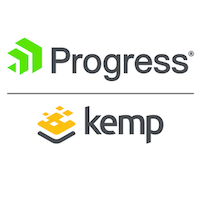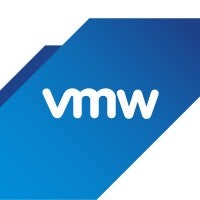
The speed of processing power and server responses in modern IT infrastructure is due to the widespread adoption of load balancers capable of distributing workloads between multiple servers.
Today, load balancing systems go beyond hardware, extending to software, cloud-based, and virtual appliances. Their newest iteration, application delivery controllers (ADC), offer critical capabilities for redirecting and routing traffic, protecting against web application attacks, and accelerating service performance for networks with global, remote users.
Features like global server load balancing (GSLB), integrated web application firewalls (WAF), edge security, and maximum throughput ranges exemplify how some vendors stand out in the mature industry.
This article looks at the best load balancing software, hardware, virtual, and cloud appliances and considers load balancer solutions.
What Is Load Balancing?
Load balancing is the redirecting of network traffic across a pool of servers dedicated to ensuring efficient processing for organizations and clients and continuous uptime for services. Load balancers are critical to meet growing volumes of concurrent requests from clients and maximize speed and capacity utilization.
In addition to distributing workloads to multiple servers, load balancers can help:
- Prevent distributed-denial-of-service (DDoS) attacks
- Allow legitimate users uninterrupted access to services
- Protect against single-point-of-failure outages
- Prevent traffic bottlenecks to systems
Compare the Best Load Balancing Software
| Vendor | GSLB | Integrated WAF | DDoS Protection | Analytics | Physical | Cloud | Virtual | Container |
| A10 Networks | ✅ | ✅ | ✅ | ✅ | ✅ | ✅ | ✅ | ✅ |
| Array Networks | ✅ | ✅ | ✅ | 🚫 | ✅ | ✅ | ✅ | 🚫 |
| AWS | 🚫 | 🚫 | 🚫 | 🚫 | 🚫 | ✅ | ✅ | ✅ |
| Barracuda | ✅ | ✅ | ✅ | 🚫 | ✅ | ✅ | ✅ | ✅ |
| Citrix | ✅ | ✅ | ✅ | ✅ | ✅ | ✅ | ✅ | ✅ |
| F5 Networks + NGINX | 🚫 | ✅ | ✅ | ✅ | ✅ | ✅ | ✅ | ✅ |
| HAProxy Technologies | 🚫 | ✅ | ✅ | 🚫 | 🚫 | 🚫 | 🚫 | 🚫 |
| Loadbalancer | ✅ | ✅ | ✅ | 🚫 | ✅ | ✅ | ✅ | 🚫 |
| Progress Kemp | ✅ | ✅ | ✅ | 🚫 | ✅ | ✅ | ✅ | 🚫 |
| Radware | ✅ | ✅ | ✅ | 🚫 | ✅ | 🚫 | ✅ | 🚫 |
| Snapt | ✅ | ✅ | 🚫 | 🚫 | 🚫 | ✅ | ✅ | ✅ |
| VMware + Avi Networks | ✅ | ✅ | ✅ | ✅ | ✅ | ✅ | ✅ | ✅ |

A10 Networks
Fifteen years after the launch of its first load balancing appliance, A10 Networks offers a whole stack of advanced load balancers and application delivery controllers (ADC). The Thunder ADC series includes physical and SPE appliances, bare metal, virtual appliances, containers, and cloud to meet hybrid infrastructure needs.
All A10 Thunder ADC systems come with Layer 4 through Layer 7 load balancing capabilities, capacity pooling licenses, and security features like SSO, advanced encryption, and application firewalls. A10’s load balancer offers industry-leading performance with 220 Gbps of application throughput.
A10 Networks Thunder ADC Features
- Harmony Controller offers advanced analytics and visibility into performance
- Integrated DDoS protection, SSL/TLS support, and IP anomaly detection
- HTTP connection multiplexing and compression for acceleration
- DNS load balancing capabilities like recursive DNS lookup, firewall, and cache
- Comprehensive protocol support and scripting options for health checks and monitoring
A10 Pros & Cons
Pros
- Strong performance and reliability with little to no downtime
- Ease of implementation and availability and quality of technical support
- Feature-rich and flexible for load balancing capabilities
Cons
- Quality assurance and documentation could use improvement
- Pricing is higher relative to other industry choices
- Power utilization on devices and performance capacity impacts

Array Networks
Array Networks is an application delivery and load balancing specialist with two decades of experience and a strong presence in China, Japan, and India. The Silicon Valley-based company’s latest server load balancers are the APV x800 Series ADCs, ensuring 99.999% availability for enterprise applications and cloud services.
The APV Series intelligently distributes application services to optimize performance while redirecting failed servers’ traffic. Array can also provide the availability of wide-area network (WAN) connections with its network of sites devoted to global server load balancing (GSLB) and link load balancing (LLB).
Array APV x800 Features
- Centralized cluster management via SSH, WebUI, or secure CLI remote users
- Client connection persistence and TCP buffering for accelerating performance
- Failover capabilities for maintaining high availability and uptime
- Web application security, including certificate protection and a proxy-based firewall
- Outbound and inbound algorithms used for link load balancing
Array Pros & Cons
Pros
- Good cost for performance relative to other load balancers
- Advanced features and controls and hardware-level architecture
- Stable application delivery control and seamless SSL offloading
Cons
- Linux and container ingress not supported
- Customer support limited to business hours
- Lagging analytics tools relative to the market

Amazon Web Services
Amazon Web Services (AWS) remains a leader in cloud infrastructure and services, making its Elastic Load Balancing (ELB) solution an easy choice for existing clients. AWS solutions include Classic LB for EC2 application instances and three additional load balancers for gateways (IP), networks (TCP, UDP, TLS), and applications (HTTP/S, gRPC). For a client’s Layer 7 traffic needs, Amazon’s Application Load Balancer comes with redirection, fixed responses, desync mitigation mode, and HTTP header-based routing.
AWS ELB Features
- Logging and monitoring with metrics of requests, errors, latency, and more
- Sticky sessions towhich route requests between targeted clients and servers
- Kubernetes controller offering direct-to-pod and support for private EKS clusters
- Configuration controls for connection draining, cross-zone LB, and access permissions
- Security capabilities like back-end server encryption and server name identification
AWS Pros & Cons
Pros
- Ease of integration and use for administrators with minimalist design
- Flexibility in choosing a curated solution based on client needs
- Highly available and reliable with auto scaling options for traffic
Cons
- No on-premises option for AWS ELB
- Lacking SSL offloading or reconfiguration for idle connection timeouts
- Classic LB offers basic capabilities with mentions of latency

Barracuda Networks
Before it became a top cybersecurity company, Barracuda Networks’ earliest solutions included its load balancer. Today, the Barracuda Load Balancer ADC pairs the vendor’s security expertise with the latest application performance optimization.
Barracuda offers global server load balancing by geographic IP and priority, site health checks, and authoritative DNS support for enterprise clients. Load Balancer ADC covers a swath of application attacks, including protection from SQL injections, cross-site scripting, and the OWASP Top 10.
Barracuda Load Balancer ADC Features
- Management tools for REST API, real-time traffic data, and role-based access control
- Authentication support for 2FA, Kerberos, RSA Secure ID, RADIUS, and LDAP
- Granular security policy management with data loss prevention (DLP) features
- Application traffic control, including request/response rewrite and content-based routing
- Log reporting and analytics related to connections, access, audits, and web firewalls
Barracuda Pros & Cons
Pros
- Robust and feature-rich tool with integrations to Barracuda’s security suite
- Simplicity in deploying and managing, as well as quality technical support
- Flexibility with changing headers, reverse proxying, and redirecting incoming traffic
Cons
- Difficulty with SSL certificates can require calling support for debugging
- Setup documentation could use improvement for more granular deployments
- Mentions of outdated GUI and lagging performance between legacy and new systems
Read more: Best Server Security Tools & Software

Citrix
In 2005, enterprise IT vendor Citrix splashed into the load balancing market with the acquisition of network traffic acceleration company, NetScaler. Citrix ADC is deployable alongside monolithic and microservice-based applications as a unified code base across hybrid environment platforms.
Citrix helps clients optimize application delivery with features for compressed content, images, front end, and TCP, in addition to integrated caching functionality. With Citrix Application Delivery Management (ADM), administrators can centrally manage policies and reporting for application health, security analytics, and ML-powered baseline activity monitoring.
Citrix ADC Features
- Front-end optimization tools for content layout, JS optimization, and domain sharding
- Dynamic routing protocols, surge protection, and GSLP for application availability
- Actionable analytics and visual policy builder through the Citrix ADM
- DoS protection for L4-L7 and L7 rewrite and responder capabilities
- Gateway features like endpoint analysis, stateless RDP proxy, and PCoIP support
Citrix Pros & Cons
Pros
- High availability and ease of configuration management
- Ability and flexibility to upgrade load balancing appliances
- Integration with Citrix Virtual Apps and Desktops
Cons
- Over reliance on community support for debugging issues
- Steep learning curve and complex user interface
- Patch management of firmware can be tricky and require additional assistance

F5 and NGINX
F5 has long been known for its BIG-IP hardware, software, and virtual appliances. With the acquisition of market player NGINX in 2019, F5’s leadership position in the load balancing marketplace isn’t in doubt. Both vendors’ load balancer products remain available separately with F5’s BIG-IP Local Traffic Manager (LTM) and NGINX Plus.
The BIG-IP LTM offers application traffic management capabilities, container ingress, customizable automation, and the scalable infrastructure needed for enterprise IT environments. Alternatively, NGINX Plus has been the more popular of the two solutions, combining an API gateway, caching, WAF, and web server into a robust load balancing solution.
F5 BIG-IP Local Traffic Manager (LTM) Features
- Optimize delivery with RAM caching and symmetric adaptive compression
- Administrator visibility with logging, performance metrics, and analytics
- Active application clustering and on-demand scalability
- Health monitoring, state management, and load balancing for application traffic
- Programmable infrastructure capabilities with SOAP and REST API management

NGINX Plus Features
- Support for cloud (AWS, Azure, VMware) and container environments (Docker, K8s)
- Load balancing support for HTTP, TCP, and UDP
- Authentication options include HTTP, NTLM, JWT, OpenID Connect, and SSO
- Scripting and programmability support for JS, Lua, Ansible, Chef, and Puppet
- High availability modes, configuration synchronization, and sticky session persistence
F5 and NGINX Pros & Cons
Pros
- Very fast relative to other load balancers
- Little memory usage and stable
- Praise for solid performance relative to cost
Cons
- Lacking community support forums and documentation
- Configuration and customization can be complex for less experienced admins
- Limited documentation for features and parameters of product

HAProxy Technologies
For customers interested in free, open-source load balancing software, HAProxy comes with the most prominent peer community, consistent updates, and advanced features and support for enterprise clients.
Beyond advanced health checks, acceleration, and persistence — which comes with the open-source version — HAProxy Enterprise offers 24×7 support, ticket key synchronization, high availability, and cluster-wide tracking. The enterprise software includes an anomalous behavior detection engine, WAF, and bot detection for advanced security.
HAProxy Enterprise Features
- Comprehensive support for load balancing methods
- Security capabilities like reverse proxy, traffic filtering, and a WAF module
- Advanced SSL algorithm selection to pick optimal certificates for clients
- Administrative tools including a runtime API, DNS, data plane API, and server templates
- Slow start and stop tools for granular control over traffic and user access
HAProxy Pros & Cons
Pros
- Flexibility with tools for load balancing, monitoring, security, and rewriting
- Linux basis saves on operational cost
- Easy to configure and implement into production environments
Cons
- Documentation can be complex and difficult to parse
- As a Linux-based solution, has a simple UI and less internal support
- Support for only text files for configuration management

Loadbalancer.org
The eponymous Loadbalancer.org offers clients a range of enterprise options between hardware, virtual, and cloud ADC solutions. With six models to choose from, the company provides a single rack (1U) hardware appliance for unlimited servers and progressive levels of maximum throughput, SSL TPS keys, Layer 7 concurrent connections, and maximum connections.
Loadbalancer.org’s cloud and virtual ADC solutions have flexible pricing structures like pay-as-you-go, perpetual, subscription, and site licenses. The UK-based vendor’s load balancers support the big three cloud infrastructure providers: AWS, Azure, and Google Cloud.
Loadbalancer.org Features
- Virtual load balancing with unlimited scalability, throughput, and SSL transactions
- Configuration management and automation for content routing, caching, and tagging
- Security functionality including an integrated WAF, virtual patching, and reverse proxy
- High-performance direct routing and server load balancing for any TCP/UDP protocol
- Support for SSL acceleration and offloading, and automated SSL certificate chaining
Loadbalancer.org Pros & Cons
Pros
- Strong performance and reliability with little to no downtime
- Ease of implementation and availability and quality of technical support
- Feature-rich and flexible for load balancing performance
Cons
- Quality assurance and documentation could use improvement
- Pricing is higher relative to other industry choices
- Power utilization on devices and performance capacity impacts
Also read: Top Rack Servers

Progress Kemp
Progress continues its streak of M&A activity with the acquisition of the industry-leading load balancing vendor, Kemp Technologies, as of September 2021. The load balancer specialist has two decades in the market with the Kemp LoadMaster ADC covering hardware, cloud-native, virtual, multi-tenant, and Dell Elastic Cloud Storage.
Each solution comes with standard or enterprise support and a range of features like network telemetry, global server load balancing, edge security, and session persistence. The LoadMaster administrative interface is available via Kemp 360 Central, PowerShell or RESTful API, or web browser.
Progress Kemp Features
- Application delivery support for TLS offloading, content switching, and VLAN trunking
- Security capabilities like IP address filtering, IPsec, and DDoS mitigation
- WAF offers real-time threat mitigation and daily reputational data reporting
- Scheduling algorithms for round-robin, chained failover, regional, and real server load
- Integration with Kemp’s network performance monitoring and detection tools, Flowmon
Progress Kemp Pros & Cons
Pros
- Ease of use with minimal interaction GUI for deployment
- Readily available documentation and support
- Out-of-the-box templates for configuring instances quickly
Cons
- GUI is less intuitive and lacks shortcut descriptions
- It could be easier to set up standard configurations
- The documentation assumes high-level technical knowledge

Radware
Since 1997, Israeli-American company Radware has grown into a global provider of cybersecurity and application delivery solutions. Radware’s line of application delivery controllers is Alteon for physical, virtual, and cloud load balancing needs.
On top of its comprehensive application protection, Radware offers one of the highest maximum throughput ranges in the industry. Clients also have a lot of choices, with three different licensing packages offered for each model and throughput level. These packages address different deployment scenarios for advanced L4-L7 ADC functionality, performance optimization, and advanced security.
Radware Features
- Virtualization capabilities for high-density virtual ADC instances per device
- On-demand service scalability support and high-performance SSL
- Latest encryption standards, WAF mobile, and authentication gateway for security
- Integration with network function virtualization (NFV) based infrastructure
- Global server load balancing, link load balancing, and automated ADC service ops
Radware Pros & Cons
Pros
- Stable performance with a range of features, including SSL inspection
- Enhanced flexibility and high availability with load balancing virtualization
- Quality of end-user documentation and training
Cons
- Difficulty managing upgrades and debugging new implementations
- Some controls require contacting vendor support
- Availability of third-party integrations and resources

Snapt
Celebrating ten years in 2022, Snapt specializes in acceleration, security, and caching for application delivery. Snapt Nova is the vendor’s ML-powered ADC providing core load balancing, web acceleration, GSLB, and WAF capabilities.
Snapt’s other load balancing solution, Aria, is also a full-stack ADC, but fits clients with traditional architectures and standalone deployments. Nova is optimal for multi-cloud architectures and clients looking for centralized deployment and control over hybrid infrastructure.
Snapt Features
- Cache and compress rich medial files, HTML, CSS, and JavaScript
- Global server load balancing for least cost and latency in infrastructure management
- Protection against DDoS attacks, botnets, SQL injections. XSS, and more
- Container support for Consul, Docker, Kubernetes, and Rancher
- Cloud support for AWS, DigitalOcean, GCP, Azure, Red Hat, and VMware
Snapt Pros & Cons
Pros
- Lightweight and fast load balancer
- Easy to set up and maintain with access to extensive configuration options
- Pricing flexibility, software accessibility, and quality of technical support
Cons
- Difficulty implementing some features and learning curves for non-technical users
- Lacks some advanced features compared to some enterprise load balancers
- A newer vendor with a smaller community of peer users

VMware
With the acquisition of Avi Networks in 2019, virtualization giant VMware entered the ADC market and extended its software-defined fabric capabilities for enterprise clients. The VMware NSX Advanced Load Balancer fits the multi-cloud era and offers analytics, application security, and ingress capabilities for Kubernetes.
The Avi Controller and Services Engine are fully automatable through a REST-based API designed for a software-defined architecture. VMware offers extensive integrations and support for monitoring, automation, DNS, public cloud infrastructure, SDN, and more as a global IT leader.
VMware Features
- Security tools like a WAF, rate limiting, DDoS mitigation, and authentication
- Application and infrastructure performance monitoring and metrics
- Change management for tracking pertinent transactions and logs
- Container support for Amazon EKS, AKS, GKE, OpenShift, Tanzu, and Kubernetes
- Load balancing support for GSLB, DNS, TLS 1.3, and SSL termination
VMware Pros & Cons
Pros
- Flexibility and elasticity of deployment and ongoing management
- Scalability and integration with VMware’s virtualization solution stack
- Ease of integration using standard APIs and third-party integrations
Cons
- Lack of pricing and licensing flexibility
- Regular upgrades mean regular debugging
- Mentions of lagging security capabilities
Read more: Best Server Virtualization Software
How to Choose a Load Balancer
Choosing the ideal load balancer means evaluating which of the above solutions fit best within existing hybrid IT environments. Not every organization needs the maximum throughput, so the range of options between vendors and within each stack makes for an empowering client experience.
- What are the load balancing needs and budget?
- Enterprise-grade vendor, open-source solution, or somewhere in between?
- Does the vendor offer hardware, software, cloud, and virtual load balancers?
- What security controls and mitigation mechanisms come integrated?
- How does the load balancer align or integrate with existing infrastructure?
- Does the vendor offer advanced ADC capabilities?
- What existing third-party integrations need support for deployment?
- What algorithms, protocols, and platforms does the solution support?
How Does a Load Balancer Work?
Load balancers are physical, software, cloud-based, or virtual systems responsible for efficiently and securely distributing traffic across a remote IT infrastructure.
To effectively manage load balancing, solutions must include connectivity to redirect multiple traffic from subnetworks, security to guard against web attacks, and traffic management for inbound and outbound requests. Load balancers can control network traffic flow to ensure high availability by using one of a handful of load balancing algorithms.
Read more: Best ETL Tools: Extract Transform & Load Software
Types of Load Balancing Algorithms
Load balancing algorithms are the methods load balancers employ to distribute requests between an environment with multiple servers. Most solutions offer round-robin load balancing by default with the option to alter scheduling policies according to server allocation and the weight of requests processed.
| Load Balancing Type | Method of Scheduling |
| Hash | Requests sent to server(s) via a specific hash or key |
| IP Hash | Requests sent to server(s) via the client’s IP address |
| Least Connections | New requests go to servers with the least current connections |
| Least Time | New requests go to available servers with the fastest response |
| Random With Two Choices | One of two random servers receives requests via Least Time |
| Round Robin | Requests allocated equally across servers in sequential order |
| Weighted Round Robin | Servers receive requests of varying weight each cycle |
What Is an Application Delivery Controller (ADC)?
The evolution of load balancing solutions led to its successor, application delivery controllers (ADC). Though there is some differentiation, load balancing remains at the heart of ADC solutions, and — to add confusion and chaos — the two product names are often used interchangeably.
Application delivery controllers are the latest enterprise load balancing systems for critical services requiring high availability. In addition to traditional load balancing capabilities, ADCs offer acceleration for web application performance, advanced caching, offloading for SSL processing, and added security.

